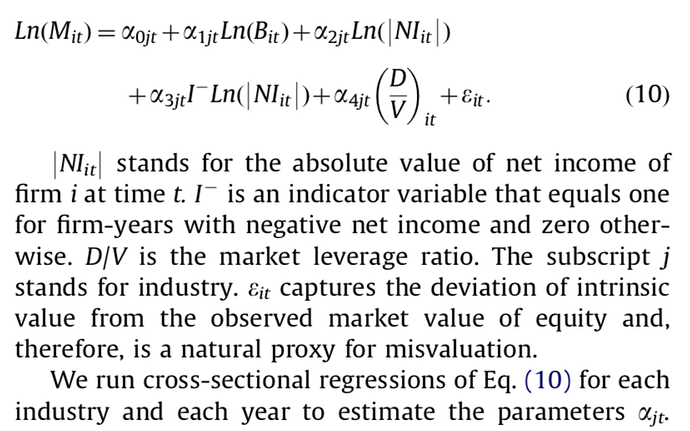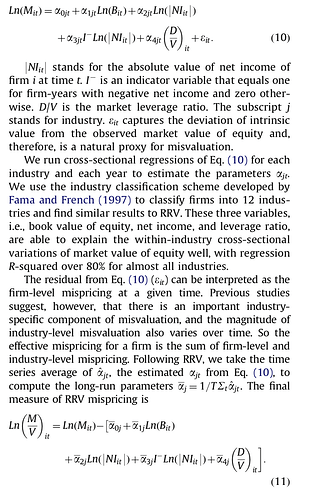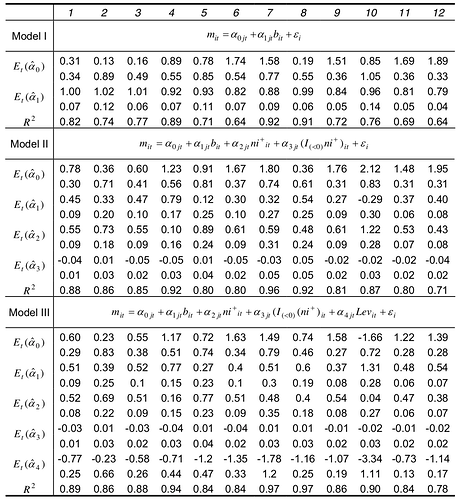I have this kind of panel data, from which I should do following regression:
ind11_M <- lm(log(testdata$`- 42 days MV...5`) ~ log(testdata$`Book value of equity(thousands)`)
+ log(testdata$`Net Income (thousands)`)
+ (testdata$`Net Income factor`) * (log(testdata$`Net Income (thousands)`) )
+ (testdata$`Market leverage -42 days`))
#> Error in eval(predvars, data, env): object 'testdata' not found
I wasn't able to get the correct warning message here as it is "Warning message: NaNs produced
However, the mian probelm that I have is that how do this regression for each year (data from 1995-2019) for each industry ?
Created on 2020-10-27 by the reprex package (v0.3.0)
tibble::tribble(
~Year, ~X..42.days.MV...5, ~Book.value.of.equity.thousands., ~Net.Income..thousands., ~Market.leverage..42.days, ~Acquirer.Industry, ~Net.Income.factor,
2019, 194670, 45268, 12523, 0, "Industry11", 0,
2019, 515040, 364816, 18846, 0.352571975206061, "Industry12", 0,
2019, 816870, 788000, 74300, 0.60828534025137, "Industry11", 0,
2019, 95654380, 14561000, 4e+06, 0.177169313339019, "Industry12", 0,
2018, 1158580, 6197000, 104000, 0.907251124357367, "Industry11", 0,
2018, 179889600, 13980531, 5770777, 0.326684463935401, "Industry12", 0,
2018, 616920, 495170, 17287, 0.59175867625309, "Industry11", 0,
2018, 124710, 427600, -39800, 0, "Industry12", 1,
2018, 169620, 88318, 13120, 0.191319148124663, "Industry12", 0,
2018, 2634050, 3402000, 153000, 0.754493641095903, "Industry11", 0
)
#> # A tibble: 10 x 7
#> Year X..42.days.MV..… Book.value.of.e… Net.Income..tho… Market.leverage…
#> <dbl> <dbl> <dbl> <dbl> <dbl>
#> 1 2019 194670 45268 12523 0
#> 2 2019 515040 364816 18846 0.353
#> 3 2019 816870 788000 74300 0.608
#> 4 2019 95654380 14561000 4000000 0.177
#> 5 2018 1158580 6197000 104000 0.907
#> 6 2018 179889600 13980531 5770777 0.327
#> 7 2018 616920 495170 17287 0.592
#> 8 2018 124710 427600 -39800 0
#> 9 2018 169620 88318 13120 0.191
#> 10 2018 2634050 3402000 153000 0.754
#> # … with 2 more variables: Acquirer.Industry <chr>, Net.Income.factor <dbl>
Created on 2020-10-27 by the reprex package (v0.3.0)



